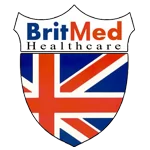- 146 SPACES, 17 City North Place, Finsbury Park, London N4 3FU
- Nightingale Consulating Rooms, 11‑19 Lisson Grove, Marylebone, London NW1 6SH
- 146 SPACES, 17 City North Place, Finsbury Park, London N4 3FU
- Nightingale Consulating Rooms, 11‑19 Lisson Grove, Marylebone, London NW1 6SH
- +44 (0)80 0970 8017
- +44 (0)20 7535 7700
Causes, Symptoms, and Treatment of Panic DisorderTachycardia, sweating, and trembling are among the symptoms of panic disorder, a psychological condition that is distinguished by recurrent episodes of acute fear or anxiety. The attacks may occur at any time without any apparent reason or may be triggered by situations. Different Types of Panic Attacks Expected panic attacks and unexpected panic attacks are the two primary types of panic attacks. Expected panic attacks are those that an individual experience in the presence of a situation or signal that the individual has previously associated with fear or anxiety. Conversely, unexpected panic attacks are sudden, unanticipated, and entirely unexpected, lacking any discernible cause or catalyst. Symptoms of Panic Disorder The following are examples of symptoms, which may differ from person to person: – Rapid heartbeat – Sweating – Trembling or shaking – Shortness of breath – Smothering sensation – Nausea or abdominal pain Dizziness or lightheadedness Causes of Panic Disorder The precise causes of panic disorder are not yet completely comprehended, and they include: – Genetic factors – Environmental factors, including trauma or stress – Chemical imbalances in the brain – Hormonal changes Panic Disorder Treatments Psychotherapy and medication are the two primary components of panic disorder treatments. The primary objective of treatment is to enhance the quality of life and reduce the frequency and duration of attacks. Treatment Methods The following are some of the most frequently used treatments for panic disorder: • Cognitive-behavioral therapy assists individuals in altering their negative thoughts and behaviors •SSRIs and benzodiazepines are the primary medications prescribed to patients diagnosed with panic disorder. •Lifestyle modifications: consistent physical activity, tension management, and relaxation. Strategies for Self-Help In addition to professional treatment, individuals with panic disorder may implement numerous self-help strategies to alleviate the symptoms of the condition. Deep breathing exercises are highly beneficial in alleviating symptoms of anxiety and distress. Progressive muscle relaxation: the act of tensing and relaxing muscles can alleviate muscular tension, which in turn reduces anxiety. Activities such as meditation and yoga are effective relaxation techniques that alleviate anxiety. In conclusion, Anxiety disorder is a mental health condition that can be effectively managed with the appropriate treatment and self-help techniques. With the appropriate support and treatment, individuals with panic disorder can learn to manage their symptoms and experience a higher quality of life. |
Additional information:
For more articles visit Britmed Healthcare https://britmedhealthcare.co.uk/blog/
Do book a Consultation with Professor Ahmed El-Missiry https://www.nightingalehospital.co.uk/specialist/prof-ahmed-elmissiry/
You can also book on Top Doctors UK
Contact us on WhatsApp 08009708017
Top Doctors: https://www.topdoctors.co.uk/doctor/ahmed-el-missiry
Hashtags:
#PanicDisorder
#MentalHealth
#BritmedHealthcare
#NightingaleHospital
#TopDoctorsUK
#ProfessorAhmedElMissiry
#MentalHealthAwareness
Websites related to the article:
Britmed Healthcare: https://britmedhealthcare.co.uk/blog/
Nightingale Hospital: https://www.nightingalehospital.co.uk/
Top Doctors UK: https://www.topdoctors.co.uk/
References:
webmd.com/anxiety-panic/mental-health-panic-disorder
mayoclinic.org/diseases-conditions/panic-attacks/symptoms-causes/syc-20376021
